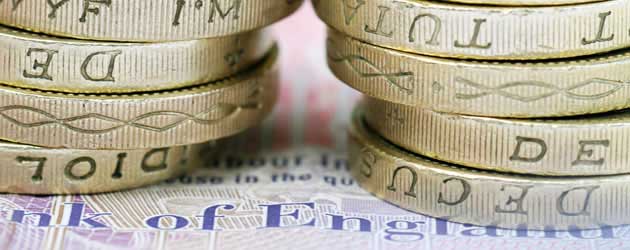
The Pound found itself declining against most of its currency peers yesterday in the absence of any fresh UK data.
Sterling slid by around half a cent against the Euro, -0.4 cents against the US Dollar, -1.3 cents against the Australian Dollar and -0.2 cents against the New Zealand Dollar.
The Euro was buffeted by an unexpectedly potent PMI result in August. The Composite Purchasing Managers Index, which measures both Manufacturing and Services across the currency bloc, stormed past analysts’ expectations of 50.9 to reach a 26-month high of 51.7. Although the large upswing in performance was largely driven by a 2-year high German Manufacturing print of 52.0, the prolific score was also influenced by signs of improvement in other areas of the 17-nation bloc. Yesterday’s robust result suggests that Eurozone GDP growth will accelerate from Q2’s 0.3% in the third quarter, thus making further ECB rate cuts fairly unlikely. However, fears still exist, in light of recent comments from ECB Chairman Mario Draghi regarding “weak credit growth”, that a lesser form of monetary easing may be introduced to help boost liquidity in the currency bloc. Naturally a dovish move of this nature would be damaging to the single currency.
The US Dollar continued to garner support in forex markets yesterday as traders reacted to a 5-month high Manufacturing PMI print of 53.9 and a near-6-year high Four-week Average Weekly Claims score of 330,500. Although the average claims figure came in positively, the latest report showed that Initial Jobless Claims increased from 323,000 to 336,000 last week. And although the Markit Manufacturing PMI result hit a multi-monthly high it actually missed the median forecast of 54.2. It was also reported that the US House Price Index bettered expectations of 0.6%, coming in at 0.7%, and that the US Leading Indicators index beat forecasts of 0.5%, printing at 0.6%. Overall the data was considered mildly bullish for the ‘Greenback’ as investors continued to speculate that QE3 would be slowed in September.
Both the Australian Dollar and the New Zealand Dollar were boosted by news that China posted a stronger-than-expected Manufacturing PMI score this month. Smashing expectations of 48.2 the impressive print of 50.1 refuelled global risk appetite and also raised hopes that the world’s second largest economy will continue to pump money into the Antipodean islands in return for mining exports and dairy products. The ‘Aussie’ benefitted against the Pound to a greater extent than the ‘Kiwi’ because GBP/AUD ran into tough resistance when it posted a 3-year high of 1.7483.
It was not a whitewash for the Pound though, Sterling managed to post a mild rally of 0.2 cents against the Canadian Dollar as Canadian Retail Sales stumped to a -0.6% decline in March. The weaker-than-anticipated score poured more cold water on hopes that the Bank of Canada could hike interest rates anytime soon.
Later on this morning UK GDP is expected to be confirmed at 0.6% for the second quarter. Any deviation from the original score has the potential to affect Sterling; an upward revision could boost the Pound, whereas a lower score could send GBP downwards. There is little significant data out of the United States today, but with technical trend identifiers signifying that that the Pound is overbought against the US Dollar, it is possible that GBP/USD could continue to slide.

Comments are closed.